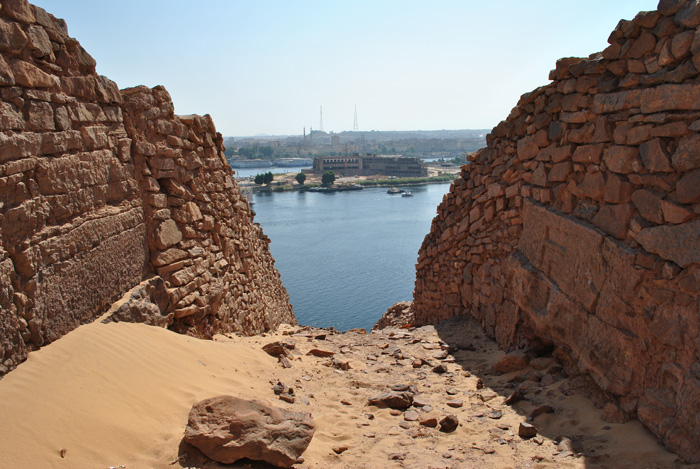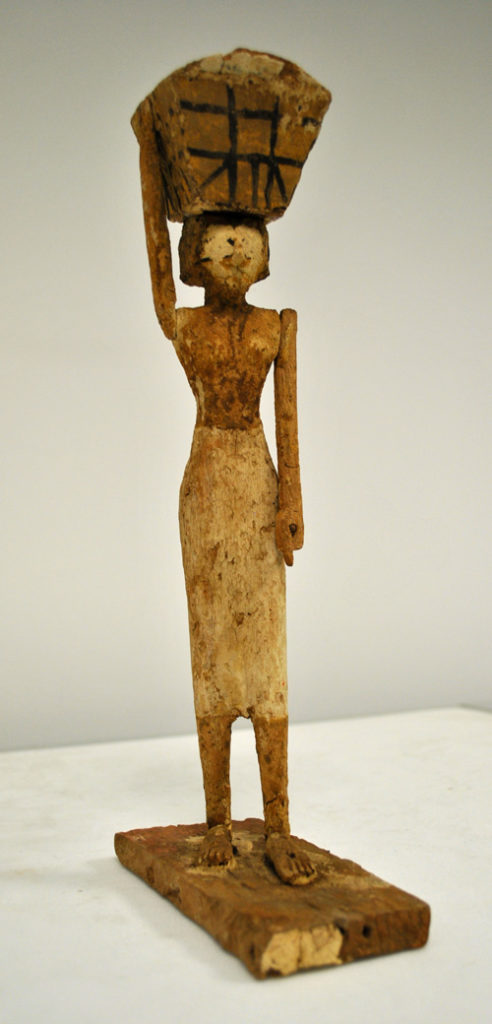‘Go West, life is peaceful there…’: The Theban Funerary Landscape
By Carl Graves, University of Birmingham
The Theban funerary landscape indicating monuments dating to all periods of Egypt’s history and a hypothetical path of a funeral procession. Luxor, Egypt.
The Egyptian portion of the Nile Valley is one of the most recognizable landscapes in the world; a narrow, green strip of fertile land carving its way through the deserts of north east Africa from the narrow gorges of the Batn el-Hagar (‘Belly of the Rocks’) in Nubia to the south northwards to the Mediterranean coast. This lush valley separates the eastern and western deserts which symbolically represented the duality of life and death in Ancient Egypt. The eastern horizon witnessed the rebirth of the Sun every morning, while the west saw his nightly death and the commencement of his journey through the underworld. It was this land of darkness that the Egyptian dead were ideally interred within, for them to become an Osiris and to join the Sun on his barque, assisting him on his voyage to the afterlife. The landscape exhibited here illustrates the way that natural topography in Egypt influenced the funerary attitudes of its ancient inhabitants.

Detail of a funerary landscape, view eastwards down a causeway that leads to tombs in the Qubbet el-Hawa. Aswan, Egypt. Image by author.
Below left, offering bearer statuette. First Intermediate Period to Middle Kingdom. Unknown provenance. ECM220, Eton College.
 The Theban floodplain comprises of an immense ritual landscape including temples, tombs and towns dating from all periods of Egyptian history. During the New Kingdom the natural environment was very different from that seen in modern maps; the two temples of Karnak and Luxor were possibly situated on islands that would have been covered in sprawling urban settlement (Bunbury et al. 2008). Following a death in the community a procession would leave these islands in the east and sail across the Nile to the west where they would disembark and continue on foot through the floodplain, as indicated in the map above. Within the procession would be offering bearers, similar to that exhibited by ECM220. They would carry the food supplies and tomb goods required by the deceased to sustain them on their journey to the afterlife. The entourage carrying the coffin containing the deceased would eventually reach the divide between the fertile, green floodplain and the barren, dusty western desert. Here they would continue through the various necropolises along paths trodden by similar processions to the prepared tomb of the deceased. These tombs were often complemented with a long causeway allowing access to the tomb forecourt, and providing a monumental approach for the cortege, those at the Qubbet el-Hawa in Aswan still preserve the steep inclines these processions would once have taken to visit the tombs. On reaching the forecourt the final rites of the funeral could commence, culminating in the eventual interment of the deceased, deposition of the tomb goods and sealing of the burial chamber. At this point the deceased would join the others interred within the cemetery in ‘the beautiful west’ and embark on their spiritual journey into the underworld where their fate would be decided.
The Theban floodplain comprises of an immense ritual landscape including temples, tombs and towns dating from all periods of Egyptian history. During the New Kingdom the natural environment was very different from that seen in modern maps; the two temples of Karnak and Luxor were possibly situated on islands that would have been covered in sprawling urban settlement (Bunbury et al. 2008). Following a death in the community a procession would leave these islands in the east and sail across the Nile to the west where they would disembark and continue on foot through the floodplain, as indicated in the map above. Within the procession would be offering bearers, similar to that exhibited by ECM220. They would carry the food supplies and tomb goods required by the deceased to sustain them on their journey to the afterlife. The entourage carrying the coffin containing the deceased would eventually reach the divide between the fertile, green floodplain and the barren, dusty western desert. Here they would continue through the various necropolises along paths trodden by similar processions to the prepared tomb of the deceased. These tombs were often complemented with a long causeway allowing access to the tomb forecourt, and providing a monumental approach for the cortege, those at the Qubbet el-Hawa in Aswan still preserve the steep inclines these processions would once have taken to visit the tombs. On reaching the forecourt the final rites of the funeral could commence, culminating in the eventual interment of the deceased, deposition of the tomb goods and sealing of the burial chamber. At this point the deceased would join the others interred within the cemetery in ‘the beautiful west’ and embark on their spiritual journey into the underworld where their fate would be decided.
Bibliography
Bunbury et al. 2008. ‘Stratigraphic Landscape Analysis: Charting the Holocene Movements of the Nile at Karnak through Ancient Egyptian Time’, Geoarchaeology: An International Journal 23:3, 351-373.
For further information about the changes in the Nile floodplain around Luxor see work currently being undertaken by Dr Angus Graham and the Theban Harbours and Waterscapes Survey on behalf of The Egypt Exploration Society.
